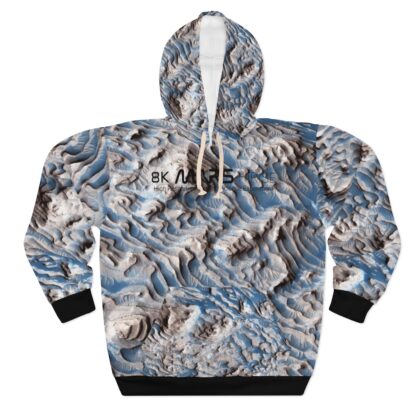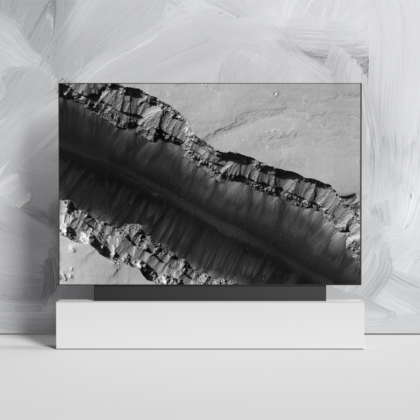Get closer to the surface with these stunning images of the surface of Mars.
This image pack contains 3 UHD 8K images from HiRISE (High Resolution Imaging Science Experiment) onboard the Mars Reconnaissance Orbiter, NASA. HiRISE is the most powerful camera ever sent to another planet, letting us see the surface of Mars at 30 cm/pixel.
Each image has been refined using Topaz Labs state of the art image upscaler Gigapixel AI to further refine the image for high quality printing at 300dpi. Further refinements are made using Topaz Labs Sharpener AI and Denoiser AI tools.
Martian Internet then meticulously scours the image by eye to ensure that interpolation is smooth and there are no artefacts.
:. 7680×4320 8K ultra high definition resolution
:. PNG Lossless file format
:. 300 dpi industry standard pixel density for high quality large prints
Alba Patera Crater
A Crater in the Northern Hemisphere — The gullies in this crater are poorly developed, but there is a bright deposit that is a good candidate for studying seasonal changes in the Northern Hemisphere. This crater is northwest of Alba Patera.
Hale Crater
HiRISE has been monitoring steep slopes on Mars because some of them reveal active processes. In some cases, there are many seasonal flows on warm slopes, suggesting some role for water in their activity.The central hills in Hale Crater is one such location, with thousands of seasonal flows on steep slopes below bedrock outcrops. The cutout shows a small sample of this image, with relatively dark and reddish lines extending onto sediment fans.These lines grow slowly over several months time, fade and disappear in the cold season (southern winter), then reform the next warm season (southern spring and summer).Image is less than 1 km (under a mile) top to bottom and is 254 km (158 mi) above the surface.
Dalmatian Dunes
Is this the side of a famed Dalmatian dog, or the surface of Mars? It’s the latter! These dark spots are the result of sublimation, when ice under the surface gets heated and turns directly into a gas. This exposes darker material that look like dark spots.Over time, even these will fade, but newer spots will appear. The ice here is made of carbon dioxide.Image is less than 5 km (3 mi) across and is 250 km (156 mi) above the surface.
Image Credit: NASA/JPL/UArizona
Modification: © 2022 Martian Internet



Reviews
There are no reviews yet.